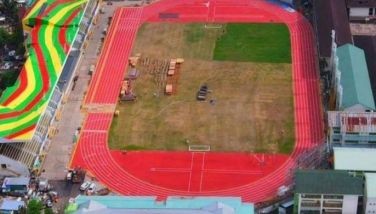Doctors spearhead larvicide campaign
CEBU, Philippines - As classes start in all public schools today, Dr. Wyben Briones and Dr. Neil Camonggol of the Cebu Medical Society (CMS), along with representatives from other private sectors, spearheaded the biggest larvicide campaign against dengue yesterday in 20 barangays in Cebu City identified with large mosquito breeding sites.
Now on its third year, this year’s campaign is said to be the biggest as starting on August, it will not only cover Metro Cebu but Mid-Cebu as well, including Carmen in the northern part, Carcar in the southern part, Toledo and Balamban in the west and Cordova in the east.
By next year, the larvicide campaign aims to cover the entire province of Cebu as part of their five-year plan.
Dr. Briones conducted the briefing during the Rotary-CMS Mid Year Anti Dengue Initiative yesterday morning to over 300 medical and health workers and volunteers at the CMS office in Banilad, this city.
The said program is a five-phase inter-organizational initiative to rid the province of Cebu of the dreaded dengue hemorrhagic fever through a search and destroy method against Aedes Aegypti mosquito using the agricultural pesticide temephos (Abate).
The Aedes mosquito (carrier) is most vulnerable in the larva stage when they can be located and destroyed. The larvicide control using the agricultural pesticide temephos is a World Health Organization (WHO)-recommended method, approved by the Philippine Department of Health and successfully used in countries as Thailand and India.
Before they were deployed to the 20 barangays, Briones made clear instructions on the right formula of applying the temephos that should be strictly followed, especially the formula which is one gram of temephos to one square meter of the breeding site.
They allotted 40 kilos of temephos yesterday. The said substance is worth P6,000 per kilo and last year they were able to buy P700,000 worth of the said larvicide control.
The said control is non-toxic to humans and mammals and any ordinary person can apply this as long as they follow the formula. The chemical will stay for two to three months once it will be dropped in the stagnant waters.
“This larvicide control is in the form of granules and will be placed in the stagnant waters and drainages. It is non-toxic and safe to humans and mammals. We are very strict in giving the instructions on the formula so that there will be no over treatment and accident for children,” said Briones.
The 20 barangays, prioritized by the campaign yesterday, were identified by the city health surveillance unit and were spotted according to the most number of cases and those with high incidence rate.
Brgy. Guadalupe was identified with the most number of cases with 91 followed by Bacayan, Lahug, Inayawan, Labangon, Tisa, San Nicolas, Mabolo, Sambag 1 and Mambaling. Brgy. Kalubihan was on top in terms of the incidence rate followed by Cogon Ramos, Bacayan, Pit-os, Sto. Nino, Ermita, Kamagayan, Tinago, Pahina and Pasil.
“We conducted the larvicide campaign since classes will already start. It will serve as a protection for our children. We would like to help control it. We’re not claiming that we’re the only ones doing this but we are teaching on the aspect that’s not yet done like the larvicide campaign. We will be hitting as many breeding sites as we can,” said Briones. — (FREEMAN)
- Latest
- Trending




















